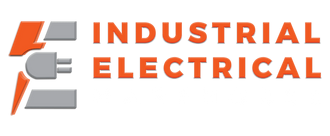Switching power supply is an essential component in modern industrial applications. Its ability to efficiently convert electrical power leads to enhanced performance, reliability, and reduced energy consumption. In this context, understanding how these power supplies work and their benefits is crucial for anyone involved in industrial systems. This article explores the significant advantages of switching power supplies and how they can boost industrial performance.
What is a Switching Power Supply?
Definition and Mechanism
A switching power supply (SMPS) is an electronic device that regulates voltage by rapidly switching on and off. This process allows it to efficiently convert high-voltage AC power from the mains into low-voltage DC power used by electronic devices. By employing techniques like pulse width modulation (PWM), switching power supplies maintain consistent output voltage levels regardless of load fluctuations, making them adaptable to various industrial needs.
Components and Functionality
Switching power supplies consist of several key components, including rectifiers, transformers, switches (usually transistors), and filters. The process begins with the rectification of AC input, followed by transformation using a high-frequency switch to stabilize the voltage output. This efficiency in conversion reduces heat loss, allowing for compact designs that save space and power.
Benefits of Switching Power Supplies
High Efficiency
One of the most significant benefits of switching power supplies is their high efficiency, typically ranging from 80% to 95%. This efficiency reduces energy costs and the total thermal footprint of industrial systems, making it a sustainable choice. In contrast, traditional linear power supplies often struggle with energy waste due to heat dissipation when stepping down voltage.
Compact Design
Because of their operational efficiency, switching power supplies can be smaller and lighter than linear power supplies. This compact design is particularly advantageous in industrial settings where space is at a premium. It allows manufacturers to save on material costs and reduces the required footprint of equipment.
Applications of Switching Power Supplies in Industry
Automation and Control Systems
In factories and industrial environments, switching power supplies are commonly used to power automation and control systems. These systems rely on stable and efficient power to ensure that machinery operates smoothly. A consistent voltage output allows for optimal performance and reduced downtime due to power fluctuations.
Industrial Machinery
- Robotic Arms
- Conveyor Systems
- 3D Printers
- Food Processing Equipment
Switching power supplies are integral in powering various types of industrial machinery, from robotic arms to conveyor systems. The ability of these power supplies to maintain stability under varying loads ensures reliable operation, crucial for continuous production meets.
Choosing the Right Switching Power Supply
Factors to Consider
When selecting a switching power supply for industrial applications, several factors need to be considered. These include the output voltage and current requirements, input voltage range, efficiency ratings, and the form factor of the device. Ensuring that the power supply is compatible with the specific machinery it will operate can significantly enhance performance.
Reliability and Safety
In industrial settings, reliability and safety are paramount. Choosing a high-quality switching power supply with built-in protections against over-voltage, over-current, and short circuits can safeguard both equipment and personnel. Ensuring that the power supply meets relevant standards and certifications will also enhance reliability.
Conclusion: The Future of Power Supplies in Industry
Switching power supplies represent a significant advancement in electrical engineering, offering countless benefits that can greatly enhance industrial performance. Their efficiency, compact design, and reliability make them an excellent choice for modern applications ranging from automation to heavy machinery. As industries strive for better performance while minimizing environmental impact, switching power supplies will play an essential role in achieving these goals. Businesses looking to adopt these technologies can start by evaluating their specific power needs and selecting suitable products from reputable manufacturers.
FAQs About Switching Power Supplies
What advantages do switching power supplies have over linear power supplies?
Switching power supplies are generally more efficient, compact, and cost-effective compared to linear power supplies, which tend to be bulkier and less energy-efficient.
Can I use a switching power supply for sensitive electronic equipment?
Yes, switching power supplies can be designed to provide low noise and ripple, making them suitable for sensitive applications.
What is the typical voltage range for a switching power supply in industrial applications?
The voltage range varies widely, but common industrial voltages include 12V, 24V, and higher for specialized applications.
Do switching power supplies need additional cooling?
While they generate less heat than linear supplies, high-loading situations may still require some cooling solutions, depending on the design.
Discover reliable solutions in switching power supplies, such as the Omron Converter Switching Power Supply DIN Rail 10A 24VDC S8VK-S24024, which is designed for industrial needs.
Complementary Product Collections to Explore
To further support efficient industrial systems powered by switching power supplies, consider exploring these complementary collections from Industrial Electrical Warehouse—each aligned with enhancing automation, control, and connectivity:
➡️ Motor Control Equipment – Browse robust solutions like motor starters, contactors, relays, and variable speed drives, all designed for precise control, reliability, and energy-efficient operation.
➡️ Sensors & Temperature Controllers – Discover an extensive array of high-quality sensors (temperature, pressure, motion, proximity, photoelectric) and accessories that deliver accurate real-time data—essential for optimizing performance in automated systems.
➡️ Network & Communication Modules – Explore products that ensure seamless connectivity within your industrial control setup—including PLC communication modules and network interfaces to support smooth data integration across power, sensor, and control systems.


